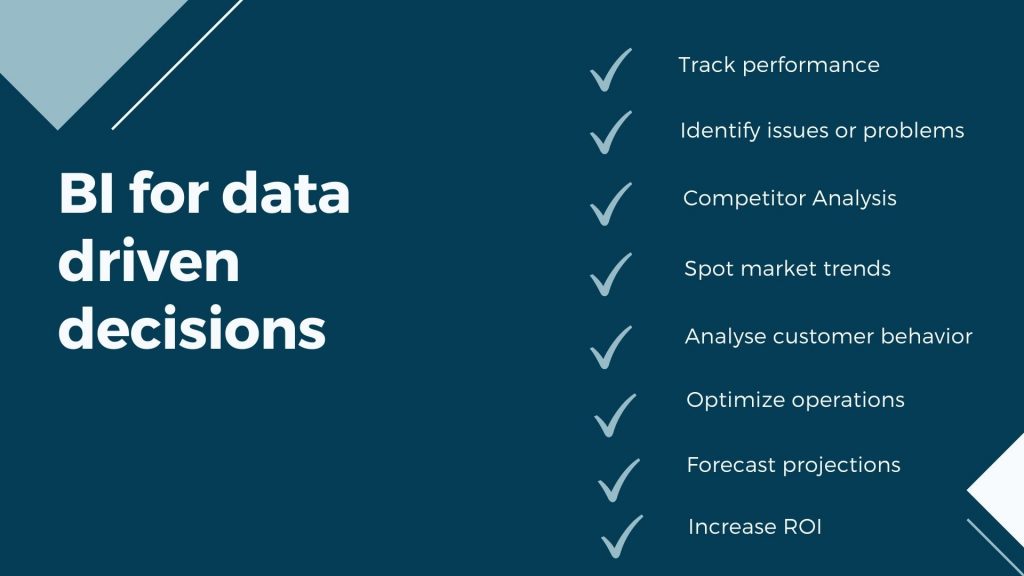
With the enormous amount of data being generated every day and stored by companies, it is nothing unexpected that finding the right data management solution continues to show up on the priority list of Chief Information Officers (CIO) of almost every company. Not only finding the right data management solutions but also keeping the data secure and ensuring its efficient distribution is the key to improve business decisions.
Organizations need to make interpretations from raw data and convert it into information to get ready for future business challenges. Most organizations today, even after the emergence of a lot of technologies, store their important data in their internal database or some massive spreadsheets. Ideally, this information should be used to extract some great insights on consumer behavior, resource allocation, sales patterns or any relevant factor. Organizational data has the potential to show the feasibility of your product and help in the planning of your future development. Thus, data can help decrease costs and increase revenues, which is the ultimate goal of any company.
Let us first understand what exactly is a Business Intelligence solution and how it can potentially help any organization.
What is a Business Intelligence (BI) solution?
A Business Intelligence (BI) solution helps in delivering precise reports by extracting data straightforwardly from your data source, whichever it may be. With Business Intelligence solutions, today we can kill the tedious task of consolidating data manually. Since BI tools can make use of and produce recent data, it permits the decision-makers to monitor business in real-time. A BI solution gives real-time reports directly to supervisors or any concerned party on-demand from any location, in just a single click. This assists with lessening the extent of error by providing managers with precise information to settle on better choices and improve business decision-making regarding what’s going on now and to forecast for the future. These solutions also focus on providing data security by utilizing existing security setups to keep information private. It also works as a firewall against any data theft or cyber-attack.
Over the period of time, Business intelligence has evolved to include more processes and activities to help improve performance. These processes include:
- Data mining
- Data preparation
- Data visualization
- Performance metrics and benchmarking
- Descriptive Analytics
- Reporting
- Querying
- Statistical Analysis
- Visual analysis
A few ways in which business intelligence can help companies make data-driven decisions:

Business Intelligence makes it possible to consolidate data from different sources, analyze the data, and afterward disperse the data to significant partners. This permits organizations to see the higher perspective and settle on brilliant business decisions. There are always risks related to business decision-making, yet the intensity of those risks could be curtailed and made less worrisome with the implementation of a solid and reliable BI solution. Business Intelligent companies can move ahead in an inexorably data-driven environment with certainty realizing they are ready for any challenge that emerges.
Here is how we at Cintel.io can help you:
As the organizations keep growing and expanding, the significance of these operational reports increases. These provide a time to time picture of the entire organization or division and help the leaders track their performance. Be it any industry or domain, operational reporting is imperative to stay on top of all the processes and get a concise yet complete view. With the emergence and wide acceptance of BI, operational reporting is bound to make positive change across the hierarchy and horizontally too.
The operational reports need to be self-explanatory with minimalistic structure with an intuitive flow. The stakeholders can draw the desired insights quickly and navigate seamlessly. The dashboards must follow the top to bottom approach in terms of KPIs and begin with the most critical KPIs being reported first, and gradually moving to the next level of insights like trends and patterns there by giving a holistic view. In case the report is serving more than one group or has shared interest, a separate dashboard or functions like filter, sort, and more should be provided.
Our operational reports convey a data story that is important to understand the goals and audience. We understand that the selection of the right KPIs is critical and that they need to be revisited on a periodic basis. We provide a balanced mix of metrics that will help the leaders in identifying the areas that need attention and the ones that need to be tracked regularly.